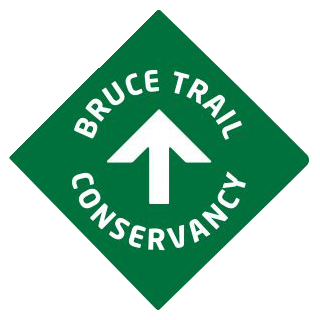We are pleased to announce that a group of NBTC volunteers planted a seed orchard! You may wonder, how is it different from a cherry or peach orchard? Instead of harvesting fruit, seeds are harvested. These seeds are used for scattering in the areas where we pull out invasive species. More particularly, a seed orchard is a managed planting of specifically selected plants to be used for the mass production of genetically verified seeds to enhance or establish future restoration projects. Shade plants were chosen for this project as the Niagara area is a Carolinian Ecozone. The Great Lakes provide a temperate climate with milder winters. The region has high soil fertility (hence the plethora of orchards and vineyards) and tree coverage. The Carolinian Ecozone is home to a third of either rare or threatened species including Canada Mayflower, Wild Ginger Spinulose Woodfern, Wild Geranium, Bloodroot, Hairy Solomon’s Seal and Jack-In-the-Pulpit.
In September our enthusiastic Niagara volunteers under the direction of BTC ecologists Lyndsey Wilkerson and Mara McHaffie prepared and planted a seed orchard on BTC property – the St Paul Nature Reserve. A small area which had been previously cleared of invasive species such as English Ivy, Buckhorn and Garlic Mustard we set to work to clear rocks, scrub and a few tenuous trees. The next two work days were spent planting native shade plants. We planted Blue Vervain, Snowberry, Spicebush, Papaw trees, Elderberry, Red Elderberry, Jack-in-the-Pulpit, False Solomon’s Seal, Blue Cohosh and Mayapple.
By next year, when we remove invasive species elsewhere on the trail such as garlic mustard and buckthorn we can spread native seeds harvested from our seed orchard. This will encourage more native plants to take over from invasive species. In one year, a single plant can easily produce 100 seeds which can then grow into 100 plants which can produce 10,000 seeds! The growth can be used to power our restoration goals.
Hiking along the trail about km5.8 (coming from Queenston, just after St Paul Ave) you will be able to see the orchard. Volunteers will continue to monitor the growth, water the plants when needed, pull weeds and finally harvest the seeds. This is one of our ongoing biodiversity conservation projects.
This was the second seed orchard planted along the Bruce Trail. Last year Iroquoia Club planted a sun seed orchard. Caledon Club hopes to have a seed orchard planted this fall




